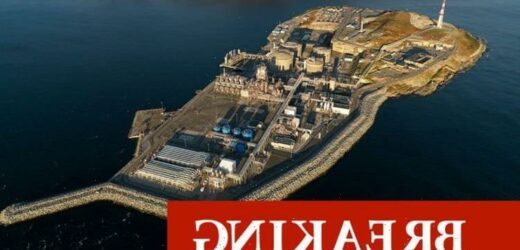Kwasi Kwarteng discusses the Channel energy line
We use your sign-up to provide content in ways you’ve consented to and to improve our understanding of you. This may include adverts from us and 3rd parties based on our understanding. You can unsubscribe at any time. More info
Norway’s Hammerfest LNG plant is facing delays after a fire broke out last year.
It delivers a fresh blow to Europe in securing more gas during the energy crisis.
The UK in particular will be hit hard, as a third of our supplies come from Norway.

The plant, operated by Equinor, is now expected to resume output on May 17.
That is a six week delay on the previous goal of March 31.
Equinor senior vice president Grete Haaland said: “We work systematically to deliver on the plan we established, but challenges related to COVID-19 restrictions require that we need more time to prepare the plant for safe and stable start-up and operations.”
The LNG plant is Europe’s only large-scale supply that can be found in Melkoeya island just outside the Arctic town of Hammerfest.
It can process 18 million cubic metres (mcm) of gas per day when fully operational.
It was tipped to provide a lifeline to Europe amid an energy crisis caused by an overeliance on Russian gas.
Tom Marzec-Manser, head of gas analytics at ICIS, told Reuters: “It’s highly likely the market was counting on much of this volume coming to Europe from the start of April and assisting in the uphill task of once again filling very low storage sites over summer.”
European gas storages were holding 39 percent of their capacity as of January 29, according to Gas Infrastructure Europe data.
The Hammerfest plant has been out of service since September 2020 following a blaze that raised concerns over safety practices.
Work has been carried out since the fire, including checking more than 22,000 components and replacing 180 km (113 miles) of electrical cables.
But the coronavirus pandemic is said to have hit staff hard, even halving their capacity at times.
Luckily the UK is far less reliant on Russian gas than the EU – who import about 40 percent.
Around half of the UK’s gas supplies are of domestic origin, from the North Sea.
The rest consists almost entirely of imports of liquefied natural gas (LNG), which arrive in Britain by sea from countries such as Qatar, the US and even Trinidad and Tobago.
The small amount of Russian gas that does reach the UK comes in LNG form.
LNG supplies are particularly sensitive to global market prices and are sold to whoever pays the most, with China one of the keenest bidders.
Source: Read Full Article

